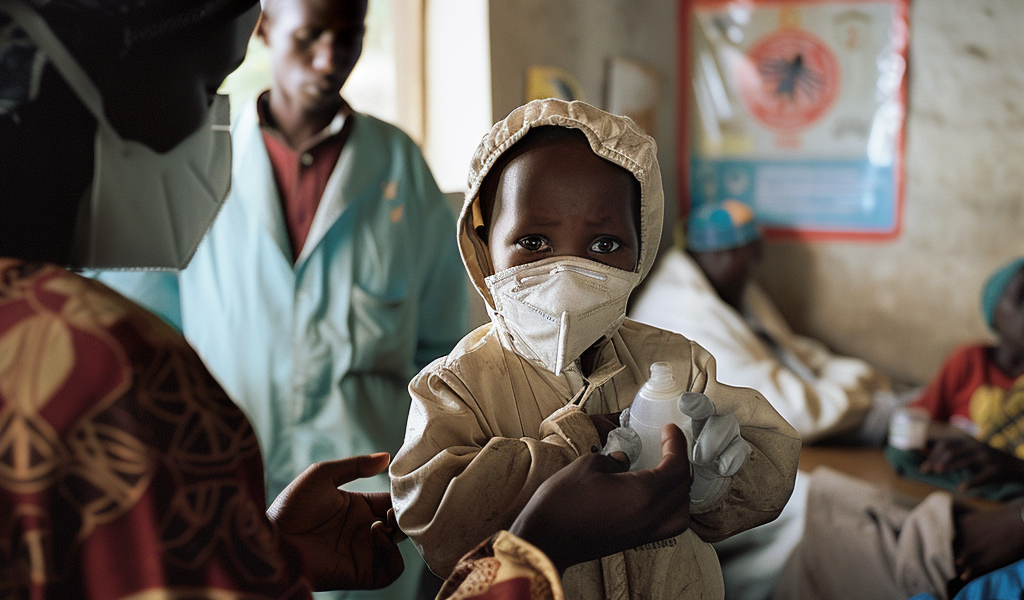Malaria Outbreak in Ethiopia: A Public Health Crisis
As of October 20, 2024, Ethiopia is grappling with a severe malaria outbreak, having reported over 7.3 million cases and 1,157 fatalities since the beginning of the year. This alarming data highlights a case fatality rate (CFR) of 0.02%, making malaria a critical public health concern in the country.
Approximately 75% of Ethiopia’s land is classified as endemic for malaria, placing around 69% of the population at risk of infection. The disease poses a particularly grave threat to children under five years old, contributing to up to 20% of deaths in this vulnerable age group.
The situation is further complicated by several challenges in delivering essential healthcare services. Many health facilities in conflict-affected regions are barely operational, making it difficult for individuals to access timely malaria treatment. Concurrent disease outbreaks and humanitarian emergencies are exacerbating these healthcare delivery challenges.
The World Health Organization (WHO) has assessed the national risk for malaria in Ethiopia as high, attributing this to various factors. The spread of the mosquito species Anopheles stephensi, which is known for transmitting malaria, is a significant concern. Additionally, issues such as drought, food insecurity, climate change-induced extreme weather events, and ongoing conflicts contribute to the heightened risk.
Regionally, the risk of malaria remains moderate, with six neighboring countries—Djibouti, Eritrea, Kenya, Somalia, South Sudan, and Sudan—also experiencing concurrent malaria and other vector-borne disease outbreaks.
In 2024, the incidence of malaria has surged, with the reported cases marking the highest annual total in the last seven years. The majority of these cases (95%) have been laboratory-confirmed, with the Plasmodium falciparum parasite responsible for more than two-thirds of the infections. In comparison, the previous year saw 4.1 million cases and 527 deaths, with Plasmodium falciparum accounting for approximately 70% of those cases.
Four regions in Ethiopia are particularly hard-hit, accounting for 81% of reported malaria cases and 89% of malaria-related deaths in health facilities for 2024. These regions include:
- Oromia: 44% of cases; 667 deaths
- Amhara: 18% of cases; 56 deaths
- Southwest: 12% of cases; 250 deaths
- South Ethiopia Regional State: 7% of cases; 45 deaths
Notably, the western part of Ethiopia is experiencing a high malaria burden due to favorable geo-ecological conditions. This region has been significantly affected by the unprecedented surge in malaria cases, as indicated by the incidence map for week 42 of 2024.
In response to the outbreak, a total of 222 high-burden districts (woredas) have been identified for targeted intervention. Although these districts represent only 20% of the country’s total districts, they account for more than 75% of the national malaria burden as of 2023. Among these areas, 50 districts are reported to be partially accessible due to ongoing conflicts, complicating efforts to mitigate the outbreak.
The Ethiopian government, in collaboration with international health organizations, is working to implement strategies aimed at controlling the outbreak and improving access to malaria treatment. These strategies include enhancing surveillance systems, increasing the availability of diagnostic testing, and distributing antimalarial medications in affected areas.
As the situation continues to evolve, health authorities are urging communities to take preventive measures against malaria, including the use of insecticide-treated nets, indoor residual spraying, and seeking prompt medical attention for suspected malaria cases.
The ongoing malaria outbreak in Ethiopia serves as a stark reminder of the challenges faced in public health, particularly in regions affected by conflict and environmental changes. The need for coordinated efforts to address the underlying causes of malaria transmission and to strengthen healthcare systems is more critical than ever.





